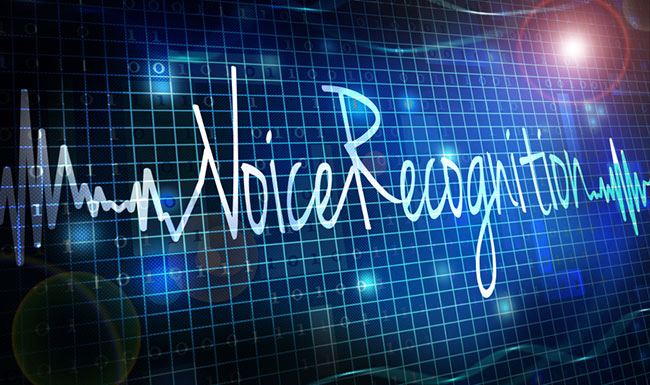- Our Story
- Publications & Resources
- Publications & Resources
- Publications
- IEEE Signal Processing Magazine
- IEEE Journal of Selected Topics in Signal Processing
- IEEE Signal Processing Letters
- IEEE Transactions on Computational Imaging
- IEEE Transactions on Image Processing
- IEEE Transactions on Information Forensics and Security
- IEEE Transactions on Multimedia
- IEEE Transactions on Signal and Information Processing over Networks
- IEEE Transactions on Signal Processing
- IEEE TCI
- IEEE TSIPN
- Data & Challenges
- Submit Manuscript
- Guidelines
- Information for Authors
- Special Issue Deadlines
- Overview Articles
- Top Accessed Articles
- SPS Newsletter
- SigPort
- SPS Resource Center
- Publications FAQ
- Blog
- News
- Dataset Papers
- Conferences & Events
- Community & Involvement
- Professional Development
- For Volunteers
- Information for Authors-OJSP
-
Home
Conferences Events IEEE Signal Processing Magazine IEEE SPL Article IEEE TIFS Article IEEE TMM Article IEEE TSP Article Jobs in Signal Processing Lectures Machine Learning Seasonal Schools Signal Processing News SPM Article SPS Distinguished Lectures SPS Newsletter Article SPS Webinar SPS Webinars SPS Webinar Series Webinar webinars
-
Our Story
What is Signal Processing?

The technology we use, and even rely on, in our everyday lives –computers, radios, video, cell phones – is enabled by signal processing. Learn More » -
Publications & Resources
-
SPS Resources
- Signal Processing Magazine The premier publication of the society.
- SPS Newsletter Monthly updates in Signal Processing
- SPS Resource Center Online library of tutorials, lectures, and presentations.
- SigPort Online repository for reports, papers, and more.
- SPS Feed The latest news, events, and more from the world of Signal Processing.
-
SPS Resources
-
Conferences & Events
-
Community & Involvement
-
Membership
- Join SPS The IEEE Signal Processing Magazine, Conference, Discounts, Awards, Collaborations, and more!
- Chapter Locator Find your local chapter and connect with fellow industry professionals, academics and students
- Women in Signal Processing Networking and engagement opportunities for women across signal processing disciplines
- Students Scholarships, conference discounts, travel grants, SP Cup, VIP Cup, 5-MICC
- Young Professionals Career development opportunities, networking
- Get Involved
-
Technical Committees
- Applied Signal Processing Systems
- Audio and Acoustic Signal Processing
- Bio Imaging and Signal Processing
- Computational Imaging
- Image Video and Multidimensional Signal Processing
- Information Forensics and Security
- Machine Learning for Signal Processing
- Multimedia Signal Processing
- Sensor Array and Multichannel
- Signal Processing for Communication and Networking
- Signal Processing Theory and Methods
- Speech and Language Processing
- Technical Working Groups
- More TC Resources
-
Membership
-
Professional Development
-
Professional Development
- Signal Processing Mentorship Academy (SigMA) Program
- Micro Mentoring Experience Program (MiME)
- Distinguished Lecturer Program
- Distinguished Lecturers
- Distinguished Lecturer Nominations
- Past Lecturers
- Distinguished Industry Speaker Program
- Distinguished Industry Speakers
- Distinguished Industry Speaker Nominations
- Industry Resources
- IEEE Training Materials
- Jobs in Signal Processing: IEEE Job Site
-
Career Resources
- SPS Education Program Educational content in signal processing and related fields.
- Distinguished Lecturer Program Chapters have access to educators and authors in the fields of Signal Processing
- Job Opportunities Signal Processing and Technical Committee specific job opportunities
- Job Submission Form Employers may submit opportunities in the area of Signal Processing.
-
Professional Development
-
For Volunteers
-
For Board & Committee Members
- Board Agenda/Minutes* Agendas, minutes and supporting documentation for Board and Committee Members
- SPS Directory* Directory of volunteers, society and division directory for Board and Committee Members.
- Membership Development Reports* Insight into the Society’s month-over-month and year-over-year growths and declines for Board and Committee Members
-
For Board & Committee Members
Popular Pages
Today's:
- Information for Authors
- (ISBI 2026) 2026 IEEE 23rd International Symposium on Biomedical Imaging
- IEEE Transactions on Information Forensics and Security
- (ASRU 2025) 2025 IEEE Automatic Speech Recognition and Understanding Workshop
- Congratulations to Signal Processing Society Members Elevated to Senior Members!
- What’s Next for Speech Recognition? Explore the Innovations Shaping the Future — New Our Digital Life Podcast Episode
- Call for Nominations for the IEEE Transactions on Medical Imaging (TMI) Best Paper Award
- IEEE Transactions on Multimedia
- Unified EDICS
- IEEE Transactions on Image Processing
- Get Involved with Technical Committees by becoming a TC Affiliate
- IEEE Signal Processing Letters
- IEEE Journal of Selected Topics in Signal Processing
- Nominate a Colleague for a 2025 IEEE Signal Processing Society Award
- IEEE Transactions on Audio, Speech and Language Processing
All time:
- Information for Authors
- Submit a Manuscript
- IEEE Transactions on Image Processing
- IEEE Transactions on Information Forensics and Security
- IEEE Transactions on Multimedia
- IEEE Transactions on Audio, Speech and Language Processing
- IEEE Signal Processing Letters
- IEEE Transactions on Signal Processing
- Conferences & Events
- IEEE Journal of Selected Topics in Signal Processing
- Information for Authors-SPL
- Conference Call for Papers
- Signal Processing 101
- IEEE Signal Processing Magazine
- Guidelines
Last viewed:
- Sayler, Andy (University of Colorado at Boulder) "Securing Secrets and Managing Trust in Modern Computing Applications"(2016)
- Computational Paralinguistics ChallengE (ComParE)
- Membership
- (ASRU 2025) 2025 IEEE Automatic Speech Recognition and Understanding Workshop
- Congratulations to Signal Processing Society Members Elevated to Senior Members!
- Affiliates
- MLSP TC Home
- IEEE Signal Processing Magazine
- Technical Committees
- What’s Next for Speech Recognition? Explore the Innovations Shaping the Future — New Our Digital Life Podcast Episode
- Nominate a Colleague for a 2025 IEEE Signal Processing Society Award
- Sensing Trends at ICASSP 2011
- ICASSP 2011 Video Recordings Now Available Online
- Call for Nominations for the IEEE Transactions on Medical Imaging (TMI) Best Paper Award
- Access Restricted
Automatic Speaker Recognition and Diarization in Co-Channel Speech
You are here
Newsletter Menu
Newsletter Categories
Top Reasons to Join SPS Today!
1. IEEE Signal Processing Magazine
2. Signal Processing Digital Library*
3. Inside Signal Processing Newsletter
4. SPS Resource Center
5. Career advancement & recognition
6. Discounts on conferences and publications
7. Professional networking
8. Communities for students, young professionals, and women
9. Volunteer opportunities
10. Coming soon! PDH/CEU credits
Click here to learn more.
News and Resources for Members of the IEEE Signal Processing Society
Automatic Speaker Recognition and Diarization in Co-Channel Speech
Advisor: Hansen, John H.L
This study investigates various aspects of multi-speaker interference and its impact on speaker recognition. Single-channel multi-speaker speech signals (aka co-channel speech) comprise a significant portion of speech processing data. Examples of co-channel signals are recordings from multiple speakers in meetings, conversations, debates, etc. The nuisances of co-channel speech are two-fold: 1) overlapped speech, and 2) non-overlapping speaker interference. In overlap, the direct effects of two stochastically similar, non-stationary signals added together disrupts speech processing performance, originally developed for single-speaker audio. For example, in speaker recognition, identifying speakers in overlapped segments is more difficult compared to single-speaker signals. Analyses in this study show that introducing overlapped speech increases speaker recognition error rates by an order of magnitude. In addition to the direct impact of overlap, its secondary effect is in how one speaker forces the other to change his/her speech characteristics. Different forms of co-channel data are investigated in this study. In scenarios where the focus is on overlap, independent cross-talk is used. Independent cross-talk refers to the summation of independent audio signals from different speakers to simulate overlap. The alternative form of data used in this study is real conversation recordings. Although conversations contain both overlapped and non-overlapped speech, independent cross-talk is a better source of overlap. The reason real conversations are not deemed sufficient for overlap analysis is the scarcity and non-uniformity of overlaps in typical conversations. Independent cross-talk is obtained from the GRID corpus, which was used in the speech separation challenge as a source of overlapped speech. Real conversations are obtained from the Switchboard telephone conversation corpus. Other real conversational data used throughout this study include: the AMI meeting corpus, Prof-lifelog, and UTDrive data. These datasets provide a perspective towards environment noise and co-channel interference in day-to-day speech. Categorizing datasets allows for a meticulous analysis of different aspects of co-channel speech. Most of the focus in analyzing overlaps is presented in the form of overlap detection techniques. This study proposes two overlap detection methods: 1) Pyknogram-based 2) Gammatone sub-band frequency modulation (GSFM). Both methods take advantage of the harmonic structure of speech to detect overlaps. Pyknograms do so by enhancing speech harmonics and evaluating dynamics across time, while GSFM magnifies the presence of multiple harmonics in different sub-bands. The other advancements proposed in this study use back-end modeling techniques to compensate for co-channel speech in real conversational data. These techniques are presented to reduce the impact of interfering speech in speaker-dependent models. Several methods are investigated, all of which propose a different modification to the popular probabilistic linear discriminant analysis (PLDA) used in state-of-the-art speaker recognition systems. In addition to model compensation techniques, this study presents CRSS-SpkrDiar, which is a speaker diarization research platform aimed at tackling conversational co-channel speech data. CRSS-SpkrDiar was developed during this study to alleviate end-to-end co-channel speech analysis. Taken collectively, the speech analysis, proposed features, and algorithmic advancements developed in this study all contribute to an improved understanding and measurable performance gain in speech/speaker technology for the co-channel speech problem.
Open Calls
Publications News
Society News
- SPS Announces 2019 Class of Distinguished Lecturers and Distinguished Industry Speakers
- Student Activities Committee - Changes in the Operations Manual, Section 9.4
- Job Opportunities in Signal Processing
- New SPS Technical Interest Profile Codes
- OU Analytics User Group
- Chapter Meeting Activity and Officer Reporting
- Student Branch Connection
- Malaysia Chapter Receives the 2018 Chapter of the Year Award!
- Inactive Chapters
- New MD Kit Portal - Custom Orders Now Available
- Upcoming Distinguished Lectures
Technical Committee News
Conferences & Events
SPS Social Media
- IEEE SPS Facebook Page https://www.facebook.com/ieeeSPS
- IEEE SPS X Page https://x.com/IEEEsps
- IEEE SPS Instagram Page https://www.instagram.com/ieeesps/?hl=en
- IEEE SPS LinkedIn Page https://www.linkedin.com/company/ieeesps/
- IEEE SPS YouTube Channel https://www.youtube.com/ieeeSPS
Home | Sitemap | Contact | Accessibility | Nondiscrimination Policy | IEEE Ethics Reporting | IEEE Privacy Policy | Terms | Feedback
© Copyright 2025 IEEE - All rights reserved. Use of this website signifies your agreement to the IEEE Terms and Conditions.
A public charity, IEEE is the world's largest technical professional organization dedicated to advancing technology for the benefit of humanity.









